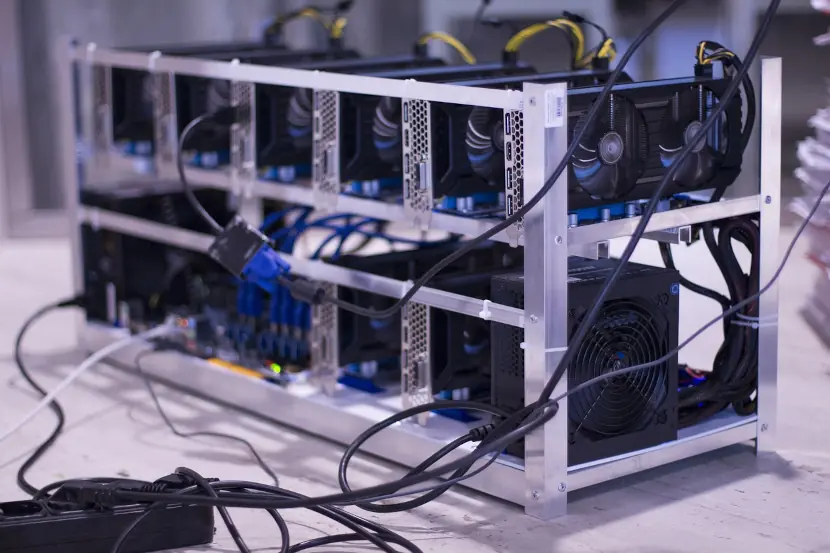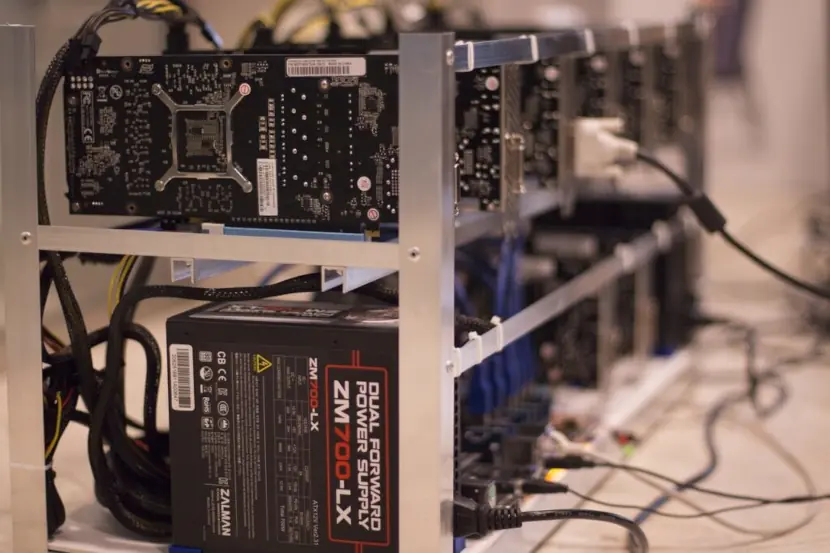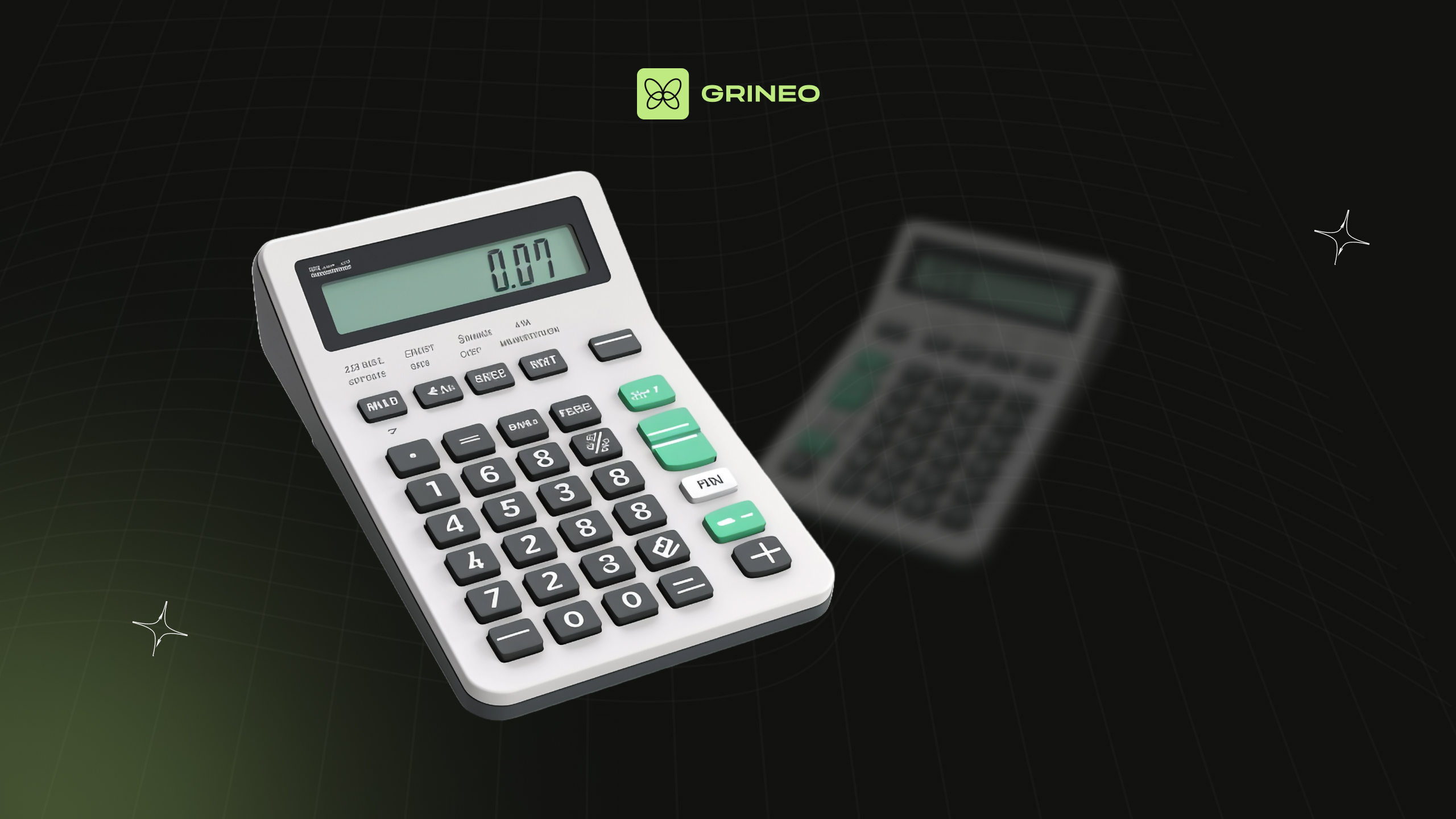What is Crypto Mining and How Does It Work?

Money doesn’t grow on trees, and neither does crypto. In fact, cryptocurrency assets are created in a democratized process called mining, meaning members of the crypto community participate in creating new units of currency and validating transactions for a reward.
People often find the topic of how crypto mining works intimidating, but it doesn’t need to be. This article will break down the main types of crypto mining and what’s going on behind the scenes of your favourite cryptocurrency.
What is Cryptocurrency?

Cryptocurrency is a form of digital or virtual currency that uses cryptography for security. Unlike traditional currencies issued by governments and central banks, cryptocurrencies operate on decentralized networks based on blockchain technology. A blockchain is a distributed ledger that records all transactions across a network of computers.
You can think of crypto as a digital asset where the transactions are stored across multiple computers, like a spreadsheet, and each computer needs to agree before the spreadsheet is updated. Because the information is distributed across multiple computers, often thousands, it’s very difficult to hack, erase, or censor information stored on a blockchain network, making cryptocurrency transactions secure and immutable.
What is Crypto Mining?

There are many types of crypto mining, which we’ll explain below. However, in essence, crypto mining refers to the process of validating transactions on a blockchain network and creating new units of cryptocurrency. The computers that store blockchain network data are called nodes, and nodes are operated by miners. Miners agree to host the record of transactions in exchange for rewards.
For example, the Bitcoin network, the world’s first cryptocurrency and blockchain network, processes transactions in batches or blocks of 2,000 transactions. A new block is processed every ten minutes.
So, when someone sends Bitcoin from their wallet, the transaction enters a queue called the mempool before being collected into a block of around 2,000 other transactions. Miners then compete to process this block, and the winning miner receives a reward of newly minted bitcoins.
Every block has a secret number called a hash number, and a miner uses their mining hardware to guess the number by issuing many guesses per second. When a miner guesses the number correctly, they receive the mining reward. This system consumes a lot of energy due to the computing power needed to make so many guesses.
This costs money in electricity bills, a deliberate feature that forces people to spend money to participate in Bitcoin mining. The reason for this is to encourage honest mining – if a miner was to attempt to fraudulently add blocks to the network, or mislabel information, they would be wasting a lot of money to do so, incentivizing honest mining practices that reward users in profit for participating.
What Are Crypto Miners For?
Crypto miners serve a number of functions in a crypto network, listed below.
- Validating transactions
- Minting new units of currency into circulation
- Voting on and accepting new network updates
When the developers of a cryptocurrency want to implement a change to their project, it’s not as straightforward as simply launching an update. Because the network is decentralized and controlled by many outside parties (the miners), a majority vote is needed.
This happens by simply creating a new blockchain where the update is in place. Miners then either validate incoming transactions on the old blockchain, rejecting the update, or the new blockchain, accepting the update, and when a majority of miners agree, the update has concluded.
What Equipment is Used in Crypto Mining?
Crypto miners use either GPUs or specialized ASIC miners for their work.
Bitcoin was originally mined with CPUs. However, Graphics processing units (GPUs) emerged as a game-changer, leveraging parallel processing capabilities to outperform CPUs. Mining rigs, equipped with multiple GPUs, became a popular choice, particularly for cryptocurrencies like Ethereum. However, the pursuit of efficiency and power led miners to explore field-programmable gate arrays (FPGAs), introducing a level of adaptability to mining hardware.
The apex of this evolution is represented by application-specific integrated circuits (ASICs), purpose-built devices designed to excel in mining specific algorithms. ASICs, dominant in contemporary mining operations, offer unparalleled hashing power and energy efficiency, particularly in Bitcoin mining. Despite their prowess, concerns about centralization have arisen due to the limited number of manufacturers controlling ASIC production.
Types of Crypto Mining: Proof of Work vs. Proof of Stake
The two main types of crypto mining are “proof of work,” where miners demonstrate that they have done the most computational work, and proof of stake, where miners demonstrate that they have the highest stake in the cryptocurrency they’re mining.
Proof of Work
Proof of work refers to the computational work needed to reach consensus among Bitcoin miners. Guessing the hash number of a block requires an immense amount of electricity. Bitcoin consumes more electricity per year than the entire nation of Switzerland, and every year, that amount increases, resulting in widespread criticism due to the negative environmental effects of mining.
This is because the network difficulty increases over time. As more miners compete on a proof of work network, it becomes more competitive, and the network adjusts how hard it is to guess the number of a block, making miners expend more and more electricity for the same reward.
In fact, in the case of Bitcoin, the reward actually shrinks over time. Bitcoin has a deflationary halving mechanism built in that means every four years, the amount of bitcoins a miner receives per block is cut in half. At the moment, the reward is 6.25 bitcoins.
While each cryptocurrency network has different rules, the basic concept behind proof of work mining is that the miner with the most and fastest guesses, and therefore the miner who is doing the most work, tends to guess the hash number correctly most often.
Proof of Stake
Proof of stake mining was created as an environmentally friendly alternative to proof of work consensus.
Proof of stake miners essentially stake, or lock, large sums of cryptocurrency into wallets on the blockchain network. Because blockchain networks are public, anyone can check and verify the contents of a wallet. Miners are chosen in a semi-randomized system to be the next one to verify a transaction.
Miners with a higher stake of funds have a significantly higher chance of being chosen, meaning the people with more money are typically the ones verifying transactions. While proof of work relies on the risk of wasting the money spent on computation power to keep miners honest, proof of stake essentially uses the staked funds as collateral. If a miner is caught misusing their position, their staked funds are destroyed.
Proof of stake mining has essentially no environmental impact. Ethereum, the second ever cryptocurrency, switched from PoW to PoS mining in 2022, resulting in a 99.9% reduction in energy costs and carbon footprint. The process of minting NFTs had been frequently criticized for consuming incredibly large amounts of energy, whereas that is no longer an issue on the Ethereum network.
PoW vs PoS Mining
There are arguments for and against each type of mining. Proof of Work is extremely harmful to the environment, and this is by far the largest issue surrounding PoW consensus. The increasing competition in PoW mining means that users have moved from CPU to GPU mining and then specialized ASIC miners, with successful operations now consisting of massive ASIC server farms with tens of millions of dollars worth of equipment and electricity bills.
This forces smaller miners out of the equation, meaning mining is no longer profitable for individual miners, whereas the Bitcoin whitepaper envisioned a far fairer system where average people could mine Bitcoin if they wished using their computer.
Today, individual miners join mining pools, massive collections of miners that band their resources together and divide the rewards amongst the users. Bitcoin, for example, is now mined by a small handful of major mining pools, creating far more centralized control over the project than was initially intended.
On the other hand, PoS mining is even more centralized than PoW. While there are none of the environmental issues surrounding massive carbon waste, PoW mining essentially rewards the wealthiest stakeholders on the network with the cushy job of processing transactions for lucrative rewards, with smaller miners having basically no chance whatsoever of being selected to mine the next block.
Other forms of mining include delegated proof of stake, proof of burn, and proof of identity, although they are very uncommon, with only two primary types of mining being popular.
Is It Still Profitable to Mine Crypto?

You can still get into crypto mining today, although it’s far more competitive and less lucrative than the early days of crypto unless you’re making a multi-million dollar investment.
You can buy an ASIC mining rig or put together your own GPU rig and join one of the many mining pools competing to mine on the PoW cryptocurrency of your choice to get started. The profitability of mining depends on electricity costs in your local area as well as the current market value of the crypto you’re mining, transaction fees on the network, and mining difficulty.
Miners often mine crypto at a loss when the market is down and attempt to hold out until prices rise before selling, although of course, smaller miners with no capital reserves cannot afford to do this.









